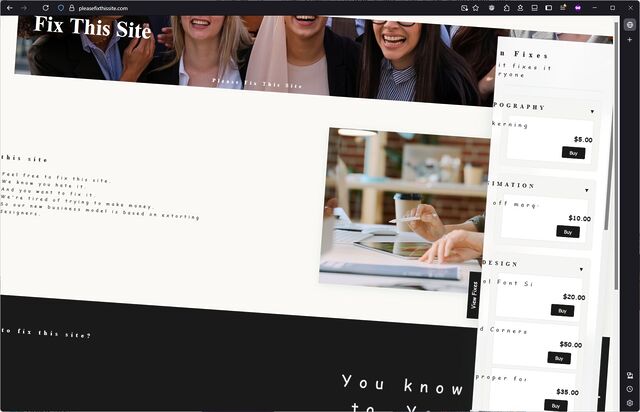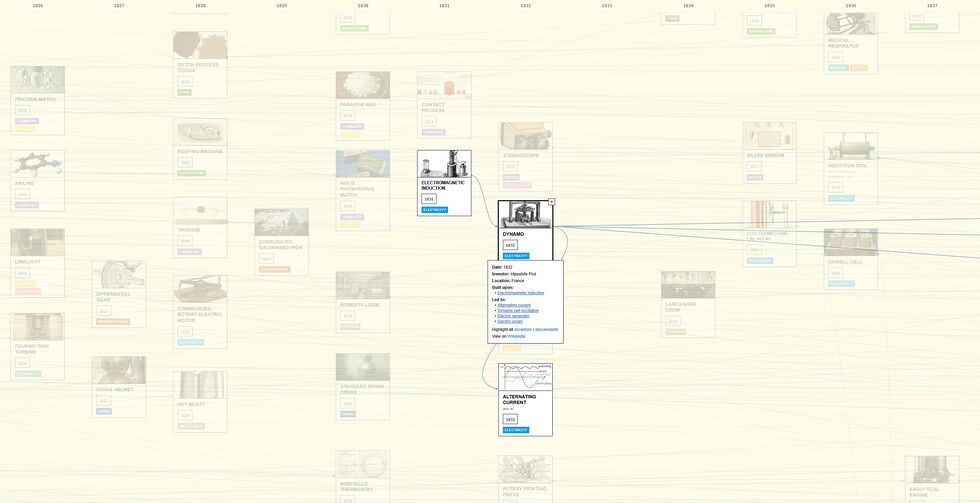This week, digital agency Humidity Studios launched PleaseFixThisSite.com, a website with a deliberately awful design aesthetic.

Inspired by XKCD 3113 “Fix This Sign”, the site features marquee animations, poor font choices, wonky rotation and alignment, and more.
Like the comic, it aims to “extort” people offended by the design choices by allowing them to pay to fix them. Once fixed, a change is fixed for everybody… at least, until somebody pays to “reset” the site back to its catastrophic mode.
![XKCD comic. Transcript: [A single panel containing a large, elevated sign with Ponytail standing in front of it.] [Title, slightly off horizontal, more to the right than central and the character spacing is not entirely consistent/aesthetic:] Doanate[sic] to fix this sign! [To the left of the lower part of the sign there is an 'QR code', tilted slightly with a plaintext link beneath it:] https://[illegible].com [To the right are several dollar values, in one column, and 'fixes', in a second, some of which have their own self-demonstrating quirks.] [The letters "R" and "N" may be too close together:] $10 fix kerning [Both dollar value and fix text are shifted left of their respective columns:] $20 align columns [This line is in a smaller font:] $20 fix text size $50 fix typo $50 fix centering $100 fix rotation [Ponytail stands looking at the sign, apparently in the process of using a smartphone:] Grrr... [Caption below panel:] My new company's business model is based on extorting graphic designers.](https://bcdn.danq.me/_q23u/2025/07/fix_this_sign1.png)
That’s cute and all, but the difference between a billboard and a web page is, of course, that a web page is under the viewer’s control. Once it’s left the server and reached your computer, there’s nothing the designer can to do stop you editing a page in any way you like. That’s just how the Web works!
A great way to do this is with userscripts: Javascript content that is injected into pages by your browser when you visit particular pages. Mostly by way of demonstration, I gave it a go. And now you can, too! All you need is a userscript manager plugin in your browser (my favourite is Violentmonkey!) and to install my (open source) script.

I enjoyed the art of the joke that is PleaseFixThisSite.com. But probably more than that, I enjoyed the excuse to remind you that by the time you’re viewing a Web page, it’s running on your computer, and you can change it any way you damn well please.
Don’t like the latest design of your favourite social network? Want to reinstate a feature of a popular video playing site? Need a dark mode to spare your eyes on a particular news publication? Annoyed by artificial wait times before you’re “allowed” to click a download button? There’s probably a userscript for all of those. And if there isn’t, you can have a go at writing one. Userscripts are great, and you should be using them.












